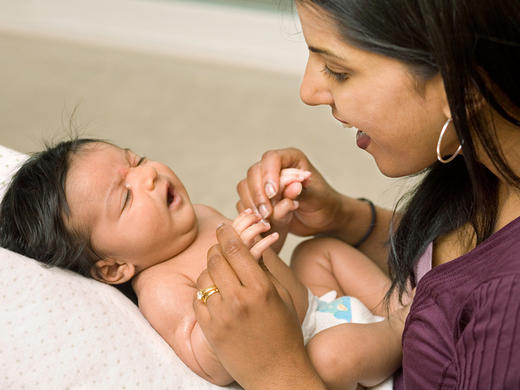More foreign-born mothers are driving the increase in U.S. births, and other surprising facts for Mother’s Day
The number of mothers in the labor force is leveling off
Alessandra Malito
Most people can agree Mother’s Day, which falls on May 14, is a good time to reflect on what moms do for their children, but also for themselves and their families.
There were 43.5 million mothers between 15 and 50 years old last year, according to the U.S. Census Bureau, and together they had almost 96 million children. Millennials have pushed off parenthood longer than generations before them, but moms in that age group (born between 1980 and 2000) now account for a majority (82%) of annual births. The average age a woman gives birth for the first time was 26 years old in 2013, up from 21 in 1970, according to Washington, D.C.-based nonpartisan think tank Pew Research Center.
Here are 3 other facts about American mothers in 2017:
There’s been a spike in births by foreign-born moms

The rise in U.S births has largely been driven by immigrant women, and has been since 1970 — up to .9 million births in 2014 from .27 million in 1970 were to foreign-born moms, according to the Pew Research Center. Alternatively, the number of births by U.S.-born mothers has been declining, to 3.1 million births in 2014 from 3.46 million in 1970. Immigrant mothers are also more likely to be married than almost a decade ago — a third of all births were to unmarried immigrant mothers, down from 37% in 2008. Births to unmarried U.S.-born mothers were around 42%.
Higher-income mothers take twice as much maternity leave than lower-income moms

The average amount of time mothers took in the past two years for maternity leave, following a birth or adoption, was 11 weeks (far more than the one week fathers took for paternity leave). Mothers in households that earned $75,000 or more took 12 weeks on average, compared with mothers with household incomes under $30,000, who took six weeks. More than half of mothers said they wished they took more time, according to Pew Research Center, but 36% said they took as much as needed or wanted. Women were also twice as likely as men to say leaving the workforce for paternal leave negatively impacted them. President Donald Trump said in his first official address to Congress that he wanted to ensure parents receive paid family leave, which would come out of unemployment benefits to parents working for companies that didn’t offer it.
See also: Why maternity leave is shrinking
The number of mothers in the labor force is leveling off

More mothers work outside of the home than they did decades ago. In 2014, 70% of moms with kids under 18 were in the workforce. In 1975, there were 47%, according to the Pew Research Center. The numbers have been leveling off in recent years, the Pew Research data shows. Almost half of households with a mom and dad see both parents go to work, up from 31% in 1970 (which can have harrowing effects on children’s health), but working moms said it was harder to balance the responsibilities of work and home life, more so than fathers.

No comments:
Post a Comment